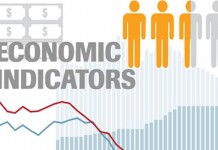Even the greenest traders can’t help but recognise that the two most important valences on the world’s markets are either growth or the lack thereof, which is referred to as an economic slowdown. This dynamic is responsible for the overwhelming amount of activity on the world’s markets as well as contributing to the way the fortunes of a nation are affected either positively or negatively.
Every action has its reaction, and the markets are no different. When an important country or economic bloc experiences growth this generates inflation, which leads to higher prices for consumers, higher prices for the commodities required to create and distribute products, and increased interest rates.
The fact that this process is a cycle becomes obvious when you recognise that higher interest rates then have the effect of quelling inflation and eventually slowing growth. It is a tentative balance that governments try their best to achieve but it is constantly in flux due to the fact that no nation is an island, economically speaking, all countries are connected by the global financial markets, and today the Internet makes this relationship all the more pronounced through it connecting the four corners of the globe almost instantaneously.
An important strand connecting the economic growth of all nations is supply and demand on the global commodities market. For binary traders commodity prices are an important leading indicator. Monitoring all the relevant commodities and determining how they are likely to affect the assets you trade should be a regular part of your trading day. What is happening on the global commodities markets can be used to shape the types of trades you place.
A traditional example of how this could work is that as economies slow down there is less of a demand for certain commodities like oil, this in-turn leads to deflation which also leads to a drop in the value of equities. Binary traders have a saying: bulls are good, bears are good, and pigs fly. This is because binary traders are not concerned with the direction that an underlying asset is moving. They can profit just as much from economic downturns as they can from bull markets because they are only speculating on the direction of an asset rather than taking possession of it and being invested in its value rising. So a slump in commodity prices can be regarded as a leading indicator of imminent downturn in certain equities, especially the ones belonging to the companies that are directly connected to the mining, refining and transportation of those commodities.
The picture has been somewhat muddied of late by the prevalence of quantitative easing since the last financial crisis. This as central banks (most notably the U.S and Japan) have tried to sure up their ailing economies with the artificial injection of liquidity on a monthly basis (do not trouble yourselves with this right now. Quantitative easing requires more than a post of its own, it needs a whole book!) The fact however remains that commodity prices are an accurate harbinger of things to come in other markets, and they will continue to do so for as long as both energy and matter are essential to the manufacture of new products.
















